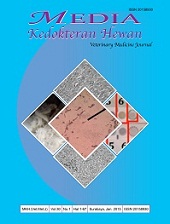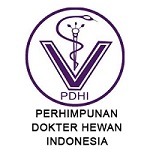Ameliorative Effects of Borreria Verticillata Aqueous Extract on Adenium obesum Stem Bark Extract-Induced Histopathological Response of The Gill, Intestine, Liver, and Kidney in Clarias gariepinus (Burchell 1822) Juveniles
Downloads
The study was carried out to determine the effect of Borreria verticillata aqueous extract on Adenium obesum stem bark aqueous extract induced histopathological responses in the gill, intestine, liver, and kidney of Clarias gariepinus juveniles. The study consisted of ten (10) groups of fifteen (15) fish each. Groups II - V received 25, 50, 100, and 200 mg/L of the BVAE, respectively. Group VI received 0.838 mg/L of AOAE only (10% of LC50), while groups VII - X received the combinations of the extracts (GII + GVI, GIII + GVI, GIV+GVI, and GV + GVI, respectively). The histopathology observed in Group VI included complete fusion of secondary lamellae and congested blood vessels, hepatic congestion, periportal inflammation, vacuolation, and hyperplasia of bile canaliculi, hypertrophy of the muscular layer and lamina propria and hyperplasia of the goblet cells, congestion of renal blood vessels, tubular degeneration, and swollen glomeruli. The histopathology induced by exposure in GVI in the gills, liver, and kidneys were ameliorated by the administration of Borreria verticillata extract in Clarias gariepinus juveniles in terms of severity which is more in the gill where there is complete club shaped gill in exposed fish compared to the Borreria verticillata extract treated groups.
Abalaka, S.E., Fatihu, M.Y., Ibrahim, N.D.G. and Ambali, S.F., 2015. Liver histopathological changes in Clarias gariepinus exposed to ethanol extract of Adenium obesum stem bark. Journal of Morphological Sciences, 32(01), pp.022-028. DOI: https://dx.doi.org/10.4322/jms.069314
Abdullahi-Gero, H.S., Ahmed, A., Zezi, A.U. and Hussaini, I.M., 2014. Preliminary evaluation of ethanol leaf extract of Borreria verticillata Linn (Rubiaceae) for analgesic and anti-inflammatory effects. Journal of Medicinal Plants Research, 8(20), pp.736-747. https://doi.org/10.5897/JMPR2014.5450
Adamu, H.M., Abayeh, O.J., Agho, M.O., Abdullahi, A.L., Uba, A., Dukku, H.U. and Wufem, B.M., 2005. An ethnobotanical survey of Bauchi State herbal plants and their antimicrobial activity. Journal of ethnopharmacology, 99(1), pp.1-4. https://doi.org/10.1016/j.jep.2004.12.025
Ahmad, V.U. and Basha, A. eds., 2006. Spectroscopic Data of Steroid Glycosides: Cardenolides and Pregnanes: Volume 4. Boston, MA: Springer US. DOI: https://doi.org/10.1007/978-0-387-39576-0
Audu, B.S., Omirinde, J.O., Gosomji, I.J. and Wazhi, P.E., 2017. Histopathological changes in the gill and liver of Clarias gariepinus exposed to acute concentrations of Vernonia amygdalina. Animal Research International, 14(1), pp.2576-2587.
Azadbakht, F., Shirali, S., Ronagh, M.T. and Zamani, I., 2019. Assessment of gill pathological responses in yellowfin sea bream (Acanthopagrus latus) under Aeromonas hydrophila exposure. Archives of Razi Institute, 74(1), pp.83-89.
Campopiano, A., Cannizzaro, A., Olori, A., Angelosanto, F., Bruno, M.R., Bruni, B.M., Casalinuovo, F. and Iavicoli, S., 2019. Use of Electron Microscopy for Detecting the Environmental Contamination by Asbestos: Analysis of Sentinel Animal Lung Tissue. Microscopy and Microanalysis, 25(S2), pp.1174-1175. DOI: https://doi.org/10.1017/S1431927619006603
Carvalho, T.L.A.D.B., Nascimento, A.A.D., Gonçalves, C.F.D.S., Santos, M.A.J.D. and Sales, A., 2020. Assessing the histological changes in fish gills as environmental bioindicators in Paraty and Sepetiba bays in Rio de Janeiro, Brazil. Latin american journal of aquatic research, 48(4), pp.590-601.DOI: 10.3856/vol48-issue4-fulltext-2351
Coutinho, C. and Gokhale, K.S., 2000. Selected oxidative enzymes and histopathological changes in the gills of Cyprinus carpio and Oreochromis mossambicus cultured in secondary sewage effluent. Water Research, 34(11), pp.2997-3004. https://doi.org/10.1016/S0043-1354(00)00050-6
Cunningham, R.P. and Porat-Shliom, N., 2021. Liver zonation–revisiting old questions with new technologies. Frontiers in physiology, 12, p.732929. https://doi.org/10.3389/fphys.2021.732929
Dalziel, J.M., 1937. The useful plants of west tropical Africa.
Doerr, M. and Stoskopf, M.K., 2019. Evaluation of euthanasia of moon jellyfish (Aurelia aurita) using simple salt solutions. Journal of Zoo and Wildlife Medicine, 50(1), pp.123-126. DOI: 10.1638/2018-01510
Du, Y., Hu, X., Miao, L. and Chen, J., 2022. Current status and development prospects of aquatic vaccines. Frontiers in immunology, 13, p.1040336. https://doi.org/10.3389/fimmu.2022.1040336
Figueiredo-Fernandes, A., Ferreira-Cardoso, J.V., Garcia-Santos, S., Monteiro, S.M., Carrola, J., Matos, P. and Fontaínhas-Fernandes, A., 2007. Histopathological changes in liver and gill epithelium of Nile tilapia, Oreochromis niloticus, exposed to waterborne copper. Pesquisa Veterinária Brasileira, 27, pp.103-109. DOI: https://doi.org/10.1590/S0100-736X2007000300004
Food and Agriculture Organization, 2014. The state of world fisheries and aquaculture: Opportunities and challenges. Food Agric. Organ. United Nations Rome, 4, pp.40-41.
Han, Y., Lin, M., Wang, X., Guo, K., Wang, S., Sun, M., Wang, J., Han, X., Fu, T., Hu, Y. and Fu, J., 2015. Basis of aggravated hepatic lipid metabolism by chronic stress in high-fat diet-fed rat. Endocrine, 48, pp.483-492. https://doi.org/10.1007/s12020-014-0307-x
Kiyohara, M., Nakatomi, T., Kurihara, S., Fushinobu, S., Suzuki, H., Tanaka, T., Shoda, S.I., Kitaoka, M., Katayama, T., Yamamoto, K. and Ashida, H., 2012. α-N-acetylgalactosaminidase from infant-associated bifidobacteria belonging to novel glycoside hydrolase family 129 is implicated in alternative mucin degradation pathway. Journal of Biological Chemistry, 287(1), pp.693-700. DOI: https://doi.org/10.1074/jbc.M111.277384
Knight, A.P. and Walter, R.G., 2002. A guide to plant poisoning of animals in North America.
Matadamas-Guzman, M., Hernández-Calderas, I., Ramírez, J.C.S. and Guzmán-García, X., 2019. Histopathological Assessment of Organisms in Ecotoxicological Studies from Mexico. Pollution of Water Bodies in Latin America: Impact of Contaminants on Species of Ecological Interest, pp.311-317. https://doi.org/10.1007/978-3-030-27296-8_17
Moise, M.M. and Abui, O.A., 2015. Haemathological and histological evaluation of African catfish Clarias gariepinus following acute exposure to Methanolic extract of Khaya senegalensis. Research in Agriculture Livestock and Fisheries, 2(3), pp.475-482. DOI: https://doi.org/10.3329/ralf.v2i3.26171
McLaughlin, J. and Garofalo, J., 2002. The desert rose (Adenium obesum). Miami-Dade Cooperative Extension Fact Sheet, 66.
Mettam, R., 1941. Plant poisoning in the domestic animals. Farm Forest, 1: 58-60.
Milijasevic, M., Veskovic-Moracanin, S., Milijasevic, J.B., Petrovic, J. and Nastasijevic, I., 2024. Antimicrobial Resistance in Aquaculture: Risk Mitigation within the One Health Context. Foods, 13(15), p.2448. https://doi.org/10.3390/foods13152448
Mohamed, F., 2003. Histopathological studies on some organs of Oreochromis niloticus, Tilapia zillii and Synodontis schall from El-Salam canal, Egypt. Egyptian Journal of Aquatic Biology and Fisheries, 7(3), pp.99-138. DOI: https://dx.doi.org/10.21608/ejabf.2003.1770
Murtala, Y., Babandi, A., Sunusi, M.M., Shehu, D., Babagana, K. and Alassan, A.J., 2016. Effect of aqueous leaf extract of Borreria verticillata species of Sudano-Sahelian Savanna on CCl4 induced hepatotoxicity. Journal of National Science Research, 5, p.24.
Muyiwa, B.O., Sambo, J.S. and Oniye, S.O., 2019. Toxicological range finding test of aqueous extract of Borreria verticillata aerial parts in exposed African catfish Clarias gariepinus (Burchell 1822) Juveniles. Toxicol Open Access, 5(142), p.2.
Muyiwa, B.O., Sambo, J.S. and Oniye, S.O., 2019b. Toxicological Evaluation of The Median Lethal Concentration (LC 50) of Aqueous Extract of Adenium obesum Stem Bark in African Catfish, Clarias gariepinus (Burchell 1822) Juveniles. Toxicol Open Access, 5(140), pp.2476-2067. DOI
Novotny, S., 2005. Systemic pharmacotherapeutics of the cardiovascular system. In C. Kahn (Ed.), The Merck Veterinary Manual (9th ed.), pp. 1966-1979.
Pacheco, M. and Santos, M.A., 2002. Biotransformation, genotoxic, and histopathological effects of environmental contaminants in European eel (Anguilla anguilla L.). Ecotoxicology and environmental safety, 53(3), pp.331-347. https://doi.org/10.1016/S0147-6513(02)00017-9
Roshanak, S., Rahimmalek, M. and Goli, S.A.H., 2016. Evaluation of seven different drying treatments in respect to total flavonoid, phenolic, vitamin C content, chlorophyll, antioxidant activity and color of green tea (Camellia sinensis or C. assamica) leaves. Journal of food science and technology, 53, pp.721-729. https://doi.org/10.1007/s13197-015-2030-x
Sharma, R., Ahmad, S. and Kumar, J., 2024. Phytochemicals and pharmacological properties of Adenium obesum: a review. International Journal Pharmacology Science and Medicine, 9(6): 61–68. DOI: 10.47760/ijpsm.2024.v09i06.006
Singh, M.K., Borah, D., Dutta, M.P., Gogoi, S., Saikia, C., Sonowal, S. and Manhai, S.K., 2022. A review on Immunostimulatory and antioxidant potential of herbs, Curcuma longa L., Camellia sinensis L. Zingiber officinale and Allium sativum Linn. in fish health: a sustainable approach for a healthy aquaculture. Ecology, Environment and Conservation, 28(3), pp.1431-1445. DOI: https://dx.doi.org/10.53550/EEC.2022.v28i03.047
Das, S. and Gupta, A., 2013. A Study on Acute Toxicity, Behaviour and Growth in Indian Flying Barb, Esomus Danricus (Hamilton-Buchanan) on Exposure to Organochlorine Pesticide, Endosulfan (Ec 35). International Journal of Environmental Sciences, 3(6), pp.2217-2223. DOI: 10.6088/ijes.2013030600037
Takvam, M., Wood, C.M., Kryvi, H. and Nilsen, T.O., 2023. Role of the kidneys in acid-base regulation and ammonia excretion in freshwater and seawater fish: implications for nephrocalcinosis. Frontiers in Physiology, 14, p.1226068. https://doi.org/10.3389/fphys.2023.1226068
Tijjani, A., Ndukwe, I.G. and Ayo, R.G. 2011a. Studies on antibacterial activity of Adenium obesum (Apocynaceae) stem bark. Continental Journal of Microbiology, 5(1): 12-17.
Tijjani, A., Ndukwe, I.G. and Ayo, R.G., 2012. Isolation and characterization of lup-20 (29)-ene-3, 28-diol (Betulin) from the stem-bark of Adenium obesum (Apocynaceae). Tropical Journal of Pharmaceutical Research, 11(2), pp.259-262. DOI: https://doi.org/10.4314/tjpr.v11i2.12
Tijjani, A., Sallau, M.S. and Sunus, I., 2011b. Synergistic activity of methanolic extract of Adenium obesum (Apocynaceae) stem-bark and oxytetracycline against some clinical bacterial isolates. Bayero Journal of Pure and Applied Sciences, 4(1), pp.79-82. DOI: https://doi.org/10.4314/bajopas.v4i1.18
Tunna, H.R., Smits, J.E., Rogers, S.M. and Jackson, L.J., 2016. Detoxification Efforts in Longnose Dace (Rhinichthys cataractae) Exposed to Municipal and Agricultural Inputs. Journal of Environmental Protection, 7(2), pp.253-267. DOI: https://dx.doi.org/10.4236/jep.2016.72022
Wei, R. and Han, C., 2024. Insights into the influence of three types of sugar on goose fatty liver formation from endoplasmic reticulum stress (ERS). Poultry Science, 103(3), p.103466. DOI: https://doi.org/10.1016/j.psj.2024.103466
Yamauchi, T. And Abe, F., 1990. Cardiac glycosides and pregnanes from Adenium obesum (studies on the constituents of Adenium. I). Chemical and pharmaceutical Bulletin, 38(3), pp.669-672. DOI: 10.1248/cpb.38.669
Zaheen, Z. and Momand, K., 2024. Histopathological Alterations Caused by Insecticides (Chlorpyrifos) in Carp Fishes in Khost, Afghanistan. Journal of Research and Applied Science Biotechnology, 3(2): 22–27. DOI: https://doi.org/10.55544/jrasb.3.2.7
Zheng, H., Deng, L., He, H. and Ma, H., 2024, March. Effect of hematoxylin and eosin staining on tissue linear birefringence imaging: a case study. In Polarized Light and Optical Angular Momentum for Biomedical Diagnostics 2024 (Vol. 12845, pp. 61-68). SPIE. DOI: https://doi.org/10.1117/12.3000847
Copyright (c) 2025 Benedict Muyiwa; Sohnap James Sambo, Abdullateef Abiodun Ajadi, Usman Abdulrauf Adekunle

This work is licensed under a Creative Commons Attribution-ShareAlike 4.0 International License.

Veterinary Medicine Journal by Unair is licensed under a Creative Commons Attribution-ShareAlike 4.0 International License.
1. The Journal allows the author to hold the copyright of the article without restrictions.
2. The Journal allows the author(s) to retain publishing rights without restrictions
3. The legal formal aspect of journal publication accessibility refers to Creative Commons Attribution Share-Alike (CC BY-SA).





11.jpg)







11.png)













